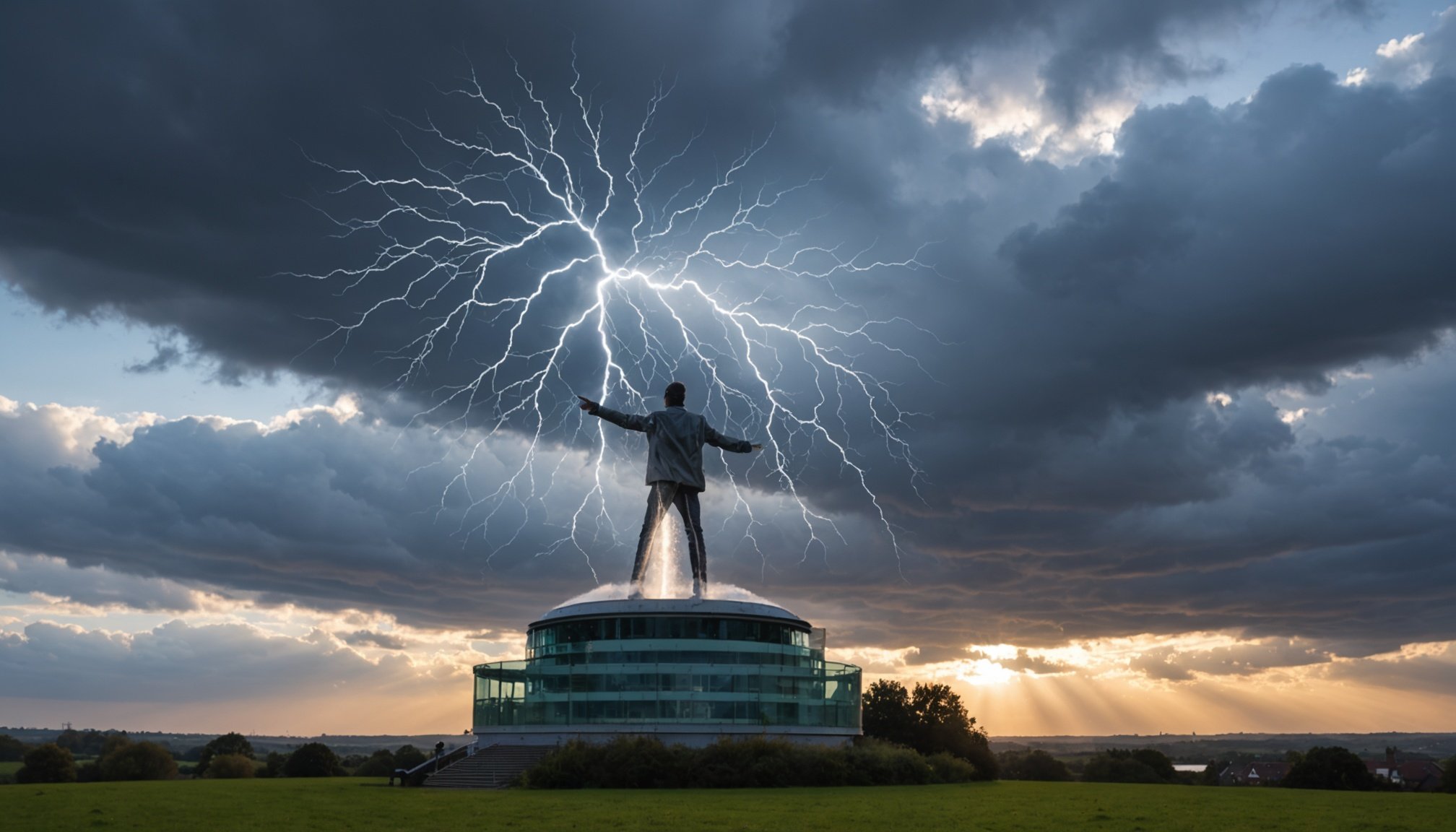Revolutionizing UK Weather Predictions: Unleashing Deep Learning for Superior Forecast Accuracy
The Evolution of Weather Forecasting
Weather forecasting has come a long way from the days of relying solely on observational data and basic mathematical models. With the advent of advanced technologies, particularly deep learning and machine learning, the field of meteorology is undergoing a significant transformation. In the UK, where weather can be notoriously unpredictable, these new methodologies are proving to be game-changers.
From Traditional Models to Deep Learning
Traditional weather forecasting models have long relied on complex physics equations and parameterizations to predict weather patterns. However, these models often fall short in capturing the intricacies and nuances of real-world weather phenomena. Deep learning, a subset of machine learning, is revolutionizing this landscape by leveraging vast amounts of data to learn patterns and make predictions.
Have you seen this : Unique guidelines for novice cat parents: ensure a great start!
For instance, a recent study introduced a hybrid model combining Convolutional Neural Networks (CNNs) and Long Short-Term Memory (LSTM) networks to predict historical temperature data. This model excels in processing complex meteorological data, addressing challenges such as missing data and high-dimensionality, and demonstrates excellent performance using Mean Absolute Error (MAE) as the loss function[2].
Key Features of Deep Learning Models in Weather Forecasting
Deep learning models bring several advanced features to the table that significantly enhance weather forecasting accuracy.
In parallel : Discovering Jeremy Jakubowicz: the art of fashion’s visual language
Atmosphere-Ocean Coupling
One of the critical advancements is the integration of atmospheric and oceanic data. This technique, known as atmosphere-ocean coupling, stabilizes long-term forecasts and improves reliability. By combining these processes, models can better capture the interactions between the atmosphere and oceans, which are crucial for accurate weather and climate predictions[3][4].
Parameterization-Free Modeling
Traditional weather models often rely on parameterizations—simplifications of complex processes. However, deep learning models can bypass these assumptions, enabling data-driven and more accurate predictions. This approach allows the models to learn directly from the data, reducing the need for manual tuning and approximations[3][4].
HEALPix Grid
The use of a HEALPix grid, originally from astronomy, is another innovative feature. This mesh provides equal-area representation, enhancing spatial precision by accurately representing Earth’s spherical shape. This eliminates distortions in global forecasts, leading to more precise and reliable predictions[3][4].
Efficient GPU Training
Deep learning models are optimized for training on powerful GPUs, such as NVIDIA A100 Tensor Core GPUs. This optimization enables high-fidelity training with minimal computational resources, making it possible to generate reliable long-term forecasts with minimal drift[3][4].
Real-World Applications and Potential
The potential of deep learning in weather forecasting extends far beyond just improving accuracy; it has significant real-world applications.
Energy Management
Accurate weather forecasts are crucial for energy management, particularly in the context of renewable energy. Predicting weather patterns helps in optimizing energy production from sources like wind and solar power. For example, knowing exactly when a storm will hit or when there will be a period of clear skies can help in scheduling maintenance and ensuring maximum energy output[5].
Agriculture
In agriculture, precise weather forecasts can make a significant difference. Farmers can plan planting, harvesting, and other activities based on reliable forecasts, reducing the risk of crop damage due to unexpected weather events. Deep learning models can predict precipitation amounts and snow levels with high accuracy, which is vital for agricultural planning[5].
Urban Planning
Urban planning also benefits from accurate weather forecasts. Cities can prepare for extreme weather events by having better predictions of when and how these events will occur. This helps in managing resources, ensuring public safety, and maintaining infrastructure[2].
Practical Insights and Actionable Advice
For those interested in leveraging these advancements, here are some practical insights and actionable advice:
Pattern Recognition
Deep learning models excel in pattern recognition, which is particularly useful for identifying subtle patterns in atmospheric conditions that traditional forecasting might miss. For instance, skiers can benefit from more accurate powder forecasts and better timing predictions, helping them plan the perfect ski day[5].
Local Knowledge
These models can learn the unique weather patterns of specific locations, including microclimates. This local knowledge is crucial for understanding how local terrain affects weather, which is essential for making informed decisions in various activities, from skiing to farming[5].
Faster Updates
Unlike traditional forecast models that take hours to run on supercomputers, deep learning models can update predictions in minutes. This efficiency allows for running hundreds of ensemble members, providing more accurate forecasting in real-time[5].
Challenges and Future Directions
While deep learning has revolutionized weather forecasting, there are still challenges to overcome.
Complexity of the Atmosphere
The atmosphere is incredibly complex, and there will always be some level of uncertainty in forecasting. However, deep learning models provide better probabilities and more confident predictions in many situations. As these systems continue to learn and improve, we can expect even better forecasting in the coming years[5].
Integration with Other Technologies
The future of weather forecasting lies in the integration of deep learning with other advanced technologies. For example, incorporating real-time satellite data, such as outgoing longwave radiation, can further boost prediction accuracy for dynamic events[3][4].
The integration of deep learning into weather forecasting is a significant step forward in the quest for superior forecast accuracy. With its ability to process vast amounts of data, recognize complex patterns, and make data-driven predictions, deep learning is transforming the field of meteorology.
A Look at the Numbers
Here is a comparative table highlighting the key features and improvements of deep learning models in weather forecasting:
| Feature | Traditional Models | Deep Learning Models |
|---|---|---|
| Data Processing | Limited by physics equations | Can process vast amounts of data |
| Pattern Recognition | Misses subtle patterns | Excels in pattern recognition |
| Atmosphere-Ocean Coupling | Limited integration | Comprehensive integration |
| Parameterizations | Rely on simplifications | Parameterization-free |
| Spatial Precision | Distortions in global forecasts | HEALPix grid for equal-area representation |
| Computational Efficiency | Hours to run on supercomputers | Minutes to update predictions |
| Real-Time Integration | Limited real-time data | Incorporates real-time satellite data |
Quotes from Experts
- “Deep learning models are like weather forecasters that have studied millions of historical weather patterns. Instead of just working with physics equations, they’ve ‘learned’ from every powder day, every surprise storm, and every unexpected bluebird break in the clouds.” – SnowBrains[5]
- “The introduction of this deep learning model marks a significant advancement in the field of meteorology, promising to improve the accuracy of long-range weather and climate forecasts.” – NVIDIA Technical Blog[4]
Final Thoughts
As we move forward, the potential of deep learning in weather forecasting is vast. Whether you are a skier looking for the perfect powder day, a farmer planning your harvest, or a city planner preparing for extreme weather events, these advancements offer a promising future. By embracing these technologies, we can make better decisions, mitigate risks, and adapt more effectively to the ever-changing weather landscape.
How You Can Get Involved
For those interested in exploring more about these models and their applications, here are some steps you can take:
- Join the NVIDIA Developer Program: Gain valuable skills and insights from industry experts and access resources like the session “Sub-Seasonal and Seasonal Forecasting with a Deep Learning Earth-System Model”[4].
- Explore Research Papers: Look into studies on deep learning models for weather forecasting on platforms like arXiv and Google Scholar[2][3].
- Stay Updated: Follow blogs and news outlets that cover the latest advancements in meteorological science and deep learning applications.
By staying informed and engaged, you can be part of the revolution that is transforming weather forecasting and making our lives better prepared for the unpredictable skies ahead.











